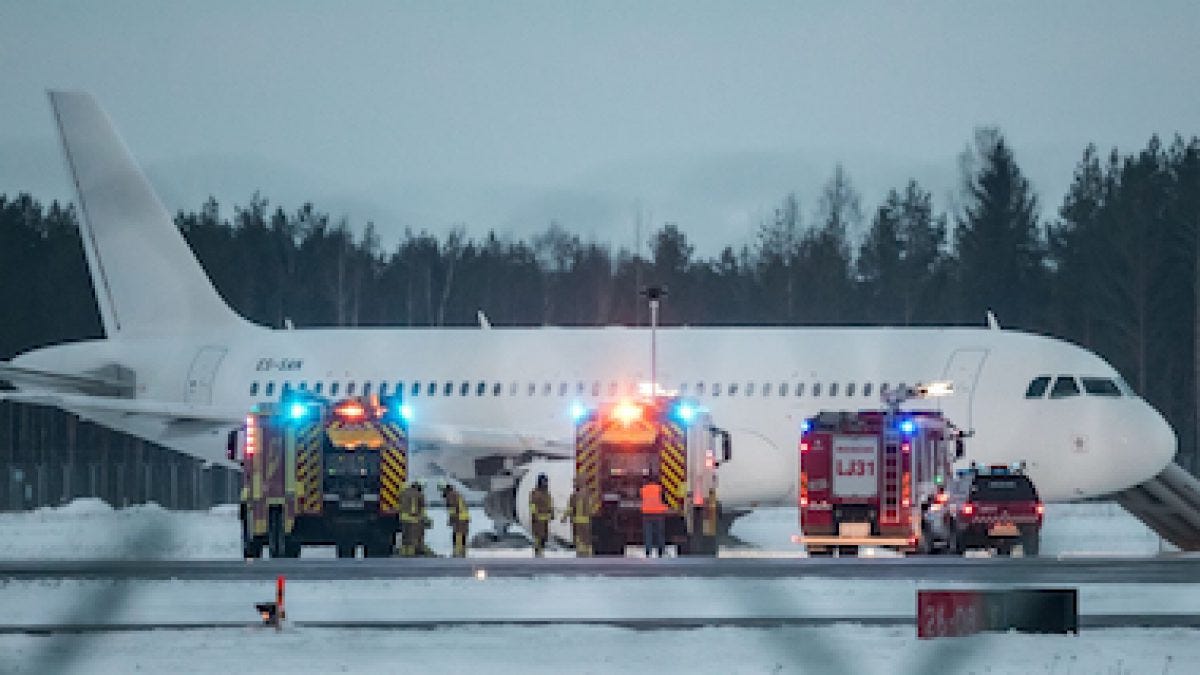The Dark Side of Logic: The near crash of SmartLynx Estonia flight 9001 | by

On the 28th of February 2018, two pilots, four trainees, and an inspector departed Tallinn, Estonia for a routine training flight aboard an Airbus A320. But as the last student pilot carried out a touch-and-go landing, the plane was wracked by a series of confusing mechanical failures. The pilots lost all control over the elevators; the plane lost height and scraped the runway on its engines before careening back into the air. The elevators were jammed, the other flight controls were degraded, the flaps weren’t working, the right engine was on fire. Every conceivable warning blared simultaneously. Faced with impending catastrophe, the pilots used what little control they had to line up with the runway for a desperate emergency landing. On final approach both engines failed, but by squeezing out the last dregs of speed, the captain managed to nurse the plane to the very threshold of the runway, where it touched down hard and rolled out in the snow. Through nerves of steel, all aboard had been saved. But what had led to this near-disaster? The answer was a surprise to everyone: there was nothing wrong with the flight controls. The sequence of events actually began when someone used the wrong oil to lubricate an obscure piston deep inside the horizontal stabilizer — a subtle mistake which led to an escalating series of computer failures that nearly cost seven people their lives.
SmartLynx Airlines Estonia is a wholly-owned subsidiary of SmartLynx Airlines, an independent Latvian carrier specializing in charter flights from the Baltic states to holiday destinations. As the Estonian branch of the company, SmartLynx Estonia operates a fleet of three Airbus A320s based out of the country’s main airport in Tallinn, the capital city.
But SmartLynx Estonia flight 9001 was not scheduled to leave the country: in fact, it wouldn’t even get far from Tallinn. The purpose of the flight was to give student pilots working their way through the airline’s in-house A320 training program practice with takeoffs, landings, and go-arounds. During the approximately three-hour session, four trainee pilots with limited flying experience would each take off, perform a go-around, execute five touch-and-go landings, then land for real, under the supervision of an instructor. Also on board were a safety pilot, qualified to fly the A320 in case of an emergency, and an inspector from the Estonian Civil Aviation Authority, who was there to monitor SmartLynx Estonia’s training program. The plane they were flying was 18 years old, but it was new to the airline: SmartLynx had purchased it earlier that month.
Under the watchful eye of the instructor — a 63-year-old veteran pilot with over 24,000 flight hours — the first three trainees carried out their exercises without incident. There was only one small hiccup, an annoying caution message that kept coming back over and over again: “ELAC 1 PITCH FAULT.” The pilots knew this meant there was something wrong with one of the plane’s computers, but the manual said all they needed to do was turn the computer off and back on again, so that’s what they did.
The Airbus A320 is a fly-by-wire aircraft, meaning that pilot control inputs are fed to a bank of computers, which in turn augment those inputs before commanding the control surfaces to move. This allows the plane to fly more smoothly, helps the pilots extract maximum performance and efficiency from the airplane, and prevents them from making inputs that could lead to a loss of control. To ensure redundancy, each set of control surfaces is attached to a different computer, each of which has multiple backups that can kick in if the primary computer fails. Among these computers are the two ELACs, short for Elevator Aileron Computers,…
Read More: The Dark Side of Logic: The near crash of SmartLynx Estonia flight 9001 | by














